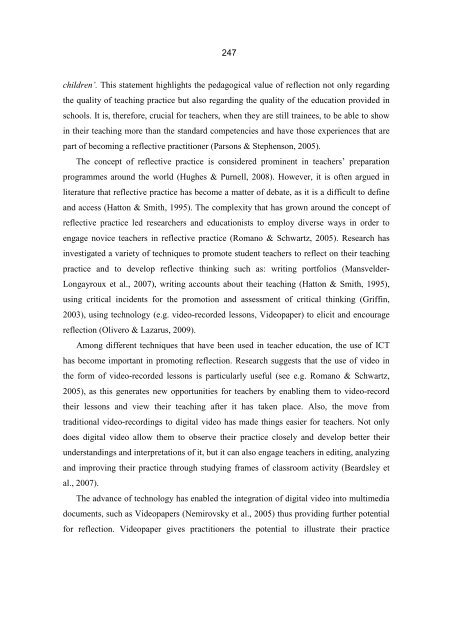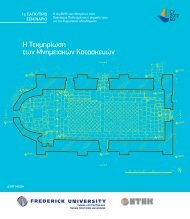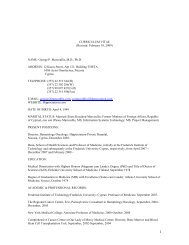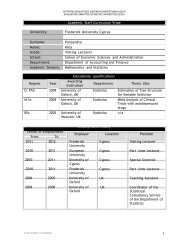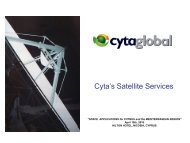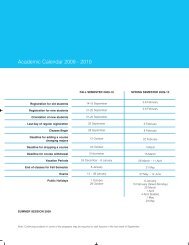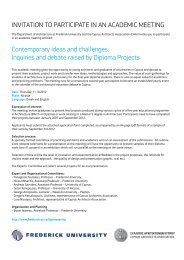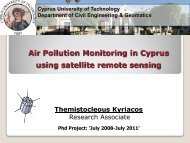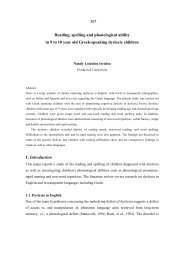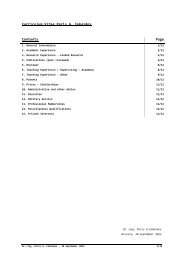Videopaper and teacher education Student teachers create ...
Videopaper and teacher education Student teachers create ...
Videopaper and teacher education Student teachers create ...
Create successful ePaper yourself
Turn your PDF publications into a flip-book with our unique Google optimized e-Paper software.
247<br />
children’. This statement highlights the pedagogical value of reflection not only regarding<br />
the quality of teaching practice but also regarding the quality of the <strong>education</strong> provided in<br />
schools. It is, therefore, crucial for <strong>teacher</strong>s, when they are still trainees, to be able to show<br />
in their teaching more than the st<strong>and</strong>ard competencies <strong>and</strong> have those experiences that are<br />
part of becoming a reflective practitioner (Parsons & Stephenson, 2005).<br />
The concept of reflective practice is considered prominent in <strong>teacher</strong>s’ preparation<br />
programmes around the world (Hughes & Purnell, 2008). However, it is often argued in<br />
literature that reflective practice has become a matter of debate, as it is a difficult to define<br />
<strong>and</strong> access (Hatton & Smith, 1995). The complexity that has grown around the concept of<br />
reflective practice led researchers <strong>and</strong> <strong>education</strong>ists to employ diverse ways in order to<br />
engage novice <strong>teacher</strong>s in reflective practice (Romano & Schwartz, 2005). Research has<br />
investigated a variety of techniques to promote student <strong>teacher</strong>s to reflect on their teaching<br />
practice <strong>and</strong> to develop reflective thinking such as: writing portfolios (Mansvelder-<br />
Longayroux et al., 2007), writing accounts about their teaching (Hatton & Smith, 1995),<br />
using critical incidents for the promotion <strong>and</strong> assessment of critical thinking (Griffin,<br />
2003), using technology (e.g. video-recorded lessons, <strong>Videopaper</strong>) to elicit <strong>and</strong> encourage<br />
reflection (Olivero & Lazarus, 2009).<br />
Among different techniques that have been used in <strong>teacher</strong> <strong>education</strong>, the use of ICT<br />
has become important in promoting reflection. Research suggests that the use of video in<br />
the form of video-recorded lessons is particularly useful (see e.g. Romano & Schwartz,<br />
2005), as this generates new opportunities for <strong>teacher</strong>s by enabling them to video-record<br />
their lessons <strong>and</strong> view their teaching after it has taken place. Also, the move from<br />
traditional video-recordings to digital video has made things easier for <strong>teacher</strong>s. Not only<br />
does digital video allow them to observe their practice closely <strong>and</strong> develop better their<br />
underst<strong>and</strong>ings <strong>and</strong> interpretations of it, but it can also engage <strong>teacher</strong>s in editing, analyzing<br />
<strong>and</strong> improving their practice through studying frames of classroom activity (Beardsley et<br />
al., 2007).<br />
The advance of technology has enabled the integration of digital video into multimedia<br />
documents, such as <strong>Videopaper</strong>s (Nemirovsky et al., 2005) thus providing further potential<br />
for reflection. <strong>Videopaper</strong> gives practitioners the potential to illustrate their practice


